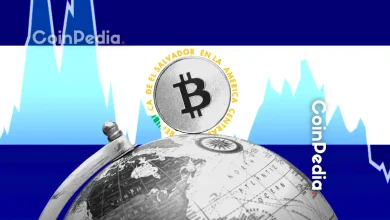
The Dencun upgrade caused a significant rise in ETH supply since April 2024, due to reduced burning on the mainnet.
While it lowers fees and improves efficiency, it also contributes to inflation, potentially affecting ETH price.
Despite the recent inflation, the total ETH supply remains lower than before the September 2022 switch to proof-of-stake.
Ethereum has been thriving recently, but not in the way you might think. Since mid-April 2024, Ether (ETH) has seen a significant increase in supply, with over 112,000 ETH added to the market. This notable rise is largely attributed to the recent Dencun upgrade, marking a crucial shift in Ethereum’s supply dynamics.
Is this a cause for celebration or concern? Read on.
Unpacking the Dencun Upgrade
Implemented on March 13, the Dencun upgrade introduced nine Ethereum Improvement Proposals, including the pivotal EIP-4844. This proposal introduced ‘blobs,’ a mechanism that temporarily stores transaction data separately, thereby reducing fees for block data on Ethereum layer-2 networks. This innovation has streamlined transaction processes and significantly cut costs. Additionally, the upgrade brought proto-danksharding, enhancing data availability for block space on the Ethereum mainnet.
This improvement has led to more efficient transactions on Ethereum layer-2 networks. However, this efficiency came at the cost of reduced ETH burning on the mainnet.
Current Ethereum Supply Trends
Despite the recent inflationary trend, the overall supply of ETH has decreased since Ethereum’s switch to a proof-of-stake consensus mechanism, in September 2022. Since then, more than 1.5 million ETH has been burned, while approximately 1.36 million ETH has been added to the supply. This results in a net reduction of 345,000 ETH, equivalent to over $1.1 billion at current prices.
As of June 26, 2024, the total supply of ETH stands significantly higher due to recent inflations. The supply of ETH has consistently increased since April, demonstrating the lasting impact of the Dencun upgrade.
What This Means for Crypto Investors
The recent increase in ETH supply presents a mixed scenario for crypto investors. On one hand, reduced transaction costs on layer-2 networks could drive more usage and adoption. On the other hand, the inflationary pressure could impact ETH’s price dynamics.
The current price of ETH is $3,380.01. Over the past 30 days, it has decreased by 13.6%. In the last 7 days, it has dropped by 4.5%, but in the past 24 hours, it has risen by 0.8%. The 24-hour trading volume of ETH stands at $11,607,441,837.
Ethereum’s recent supply inflation, driven by the Dencun upgrade, underscores the evolving nature of the cryptocurrency market. Investors must weigh the benefits of lower transaction costs against the potential for inflationary pressures to impact ETH’s price.
Also Read The: Bitcoin Price Prediction: No Confirmation Of Volatile Shifts; Here’s When Serious Fireworks Will Begin
Is the Dencun upgrade a win for Ethereum’s future? Let us know your take.








